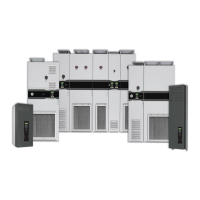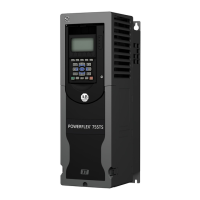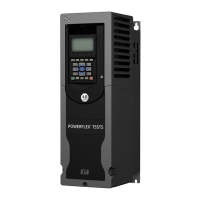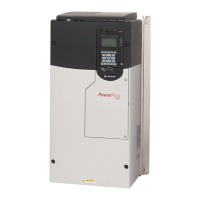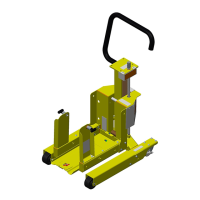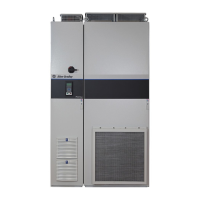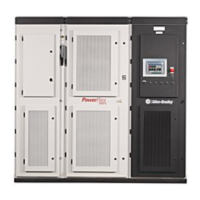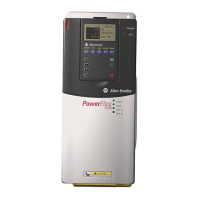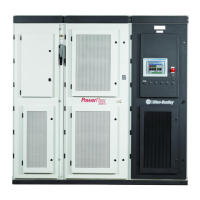Rockwell Automation Publication DRIVES-AT005D-EN-P - May 2022 45
Chapter 4 Non-regenerative Bus Supply Configuration
Advanced Sizing of the Non-Regenerative Supply
To perform the advanced sizing calculations, you need the following system information:
•System AC source voltage
• Motor nameplate power rating
• Motor nameplate efficiency
• Product family and catalog numbers for each inverter/drive connected on the common DC bus
• Inverter/drive overload duty ratings normal duty (ND) or heavy duty (HD).
• Application power requirements and polarity for each motor during the acceleration, steady running, and deceleration phases of operation
1. Convert all motor powers to kW (kW = HP x 0.746).
2. In the following steps, PMotor is motor power required for the application, not the nameplate power of the motor (unless the application
power is unknown). If the application is absorbing power, use positive values. If the application is regenerating power, use negative values.
3. Determine the total DC bus power that is required during acceleration.
• For Motoring Loads: Pdrive = Pmotor / Motor Efficiency / Inverter Efficiency (0.97)
• For Regenerating Loads: Pdrive = Pmotor * Motor Efficiency * Inverter Efficiency (0.97)
Calculate the DC bus power that is required during acceleration, taking advantage of the normal duty 110% for 1 minute (OL=1.1) or heavy
duty 150% 1 minute (OL=1.5) overload rating of the non-regenerative supply. If acceleration time is greater than 1 minute, use an overload
rating of OL=1.0.
Paccel = (Pdrive1 + Pdrive2 + …) / OL
4. Determine the total DC bus power that is required during steady-state run operation.
• For Motoring Loads: Pdrive = Pmotor / Motor Efficiency
• For Regenerating Loads: Pdrive = Pmotor * Motor Efficiency
Calculate the steady-state DC bus power that is required.
Prun = Pdrive1 + Pdrive2 + …
5. Determine the total DC bus power that is required during deceleration.
• For Motoring Loads: Pdrive = Pmotor / Motor Efficiency / Inverter Efficiency (0.97)
• For Regenerating Loads: Pdrive = Pmotor * Motor Efficiency * Inverter Efficiency (0.97)
Calculate the DC bus power that is required during deceleration, taking advantage of the normal duty 110% for 1 minute (OL=1.1) or heavy
duty 150% for 1 minute (OL=1.5) overload rating of the non-regenerative supply. If deceleration time is greater than 1 minute, use an overload
rating of OL=1.0.
PDecel = (Pdrive1 + Pdrive2 + …) / OL
6. Compare the absolute values of the DC bus power that is required during acceleration, deceleration, and steady state (steps 3…5). Use the
highest numerical value to select the bus supply in step 7.
7. Select a single or dual density PowerFlex 755TM non-regenerative supply for the system AC voltage based on the normal duty (ND) or heavy
duty (HD) DC output power rating that meets or exceeds the highest calculated DC bus power from step 6. To achieve the required rating, it
may be necessary to configure a parallel combination of single-and/or dual-density modules. Calculate the total motoring DC bus power
available by summing and derating paralleled single- and dual-density modules. See Paralleling PowerFlex 755TM Non-regenerative Modules
on page 41 for more information.
8. The DC bus capacitance per output amp ratio must meet or exceed the target µF/A ratio. Additional DC bus capacitor modules may be
required. See DC Bus Capacitance Calculation Method on page 87
for more information about DC bus capacitor µF/A ratio calculations.
9. The bus supply selected in step 7 must be able to precharge the total system DC bus capacitance. Sum the internal DC bus capacitance
values for all connected AC inverters/drives and additional capacitor modules. Include the internal capacitance of the PowerFlex 755TM non-
regenerative bus supply in this calculation.
See the tables in Appendix A
for internal DC bus capacitance values used in PowerFlex 750-Series drives, PowerFlex 755TM common bus
inverters, Kinetix 5700 servo drives, and PowerFlex 755TM non-regenerative supply optional internal DC bus capacitor banks. Tables in
ATTENTION: If Paccel, Prun, or PDecel is a negative value, the application
may require a method of regeneration. Consider a PowerFlex 755TM
regenerative bus supply (discussed in Chapter 2
or Chapter 5), or an
external brake chopper and DB resistor sized for the application
regeneration requirements.
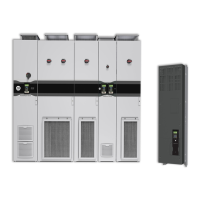
